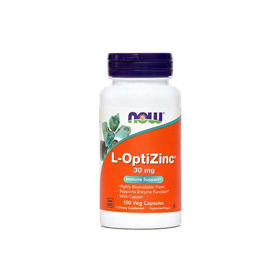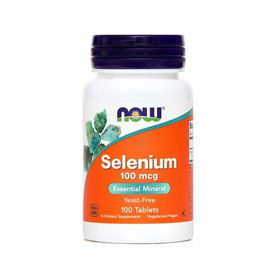
Minerals are inorganic substances that occur naturally in the soil, but are also essential for our body - a condition for the smooth functioning of metabolic processes, synthesis of vitamins, enzymes, hormones and also for proper blood circulation, regulation of body fluids, nerve transmission, muscle contraction. , cellular integrity and energy production. They act synergistically with each other and with other nutrients, and a lack or excess of any can lead to the development of disease. In addition, a modern lifestyle, increased stress levels and a fast diet further increase the need for minerals.
Selenium
Selenium is an essential microelement, as a cofactor of many enzymes (so-called selenoproteins) it participates in vital biological processes such as reproduction, metabolism of thyroid hormones, DNA synthesis and protection of cells against oxidative stress and infections. Disorders in the synthesis of selenoproteins are new for embryos. Selenoproteins are crucial for the activity of the enzyme glutathione peroxidase in protecting cells from oxidative stress and diiodothyronine deiodinase, an enzyme needed to convert the thyroid hormone thyroxine (T4) into the biologically active form triiodothyronine (T3). They also increase the effectiveness of antioxidants (e.g., vitamins C and E), through the regeneration of their oxidized forms.
According to clinical studies, supplementation of the diet with organic sources of selenium such as selenomethionine is significantly more effective in raising plasma selenium concentrations compared to inorganic sources (e.g. selenide). The bioavailability of selenomethionine is higher than 90%. Through the blood, selenium travels bound to selenoproteins and is stored in the liver, kidneys and skeletal muscle.
Selenium is recommended in the case increased oxidative stress, metabolic diseases (cancer), chronic inflammatory conditions (eg osteoarthritis, cardiovascular problems), thyroid disease (hypothyroidism, goiter), hair loss, skin changes and to strengthen the immune system. It is also recommended for low-energy diets, diets with limited protein intake and for strict vegans.
Selenium is toxic in high doses, and the boundary between safe and toxic doses is small. According to the American Institute of Medicine, the maximum allowable intake of selenium for adults is 400 mcg. An early indicator of excessive selenium intake is garlic odor and a metallic taste in the mouth. Clinical signs of chronically high selenium intake are manifested by hair loss, deformity and fragility of the nails, skin irregularities, damage to the nervous system, fatigue, irritation, nausea and diarrhea.
Zinc
Zinc is an essential mineral that regulates many metabolic processes. It plays an important role in proper growth and development, proper immune response, neurological functions and reproduction. At the cellular level, its function can be divided into 3 categories:
1) Catalytic function: Zinc is a cofactor of more than 300 enzymes in vital chemical processes. Zinc-dependent enzymes can actually be found in all classes of enzymes. It has a very important effect on the enzyme that converts retinol (vitamin A) to retinal, This plays a key role in the synthesis of rhodopsin, a visible pigment in the retina of the eye that allows black and white vision and adaptation to the subject.
2) Structural function: Zinc plays an important role in the structure of proteins and cell membranes. These zinc soils are special independent domains within protein molecules that stabilize their structure. A typical example is e.g. copper-zinc superoxide dismutase enzyme. whose catalytic activity is regulated by copper. while zinc plays a key structural role. The structure and function of cell membranes also depends on zinc. Loss increases the susceptibility of membranes to oxidative stress. their function is also hindered.
3) Regulation function: In addition to influencing the stabilization of protein structure, these zinc fingers also play an important role as transcription factors and thus regulate the expression of specific genes. Zinc also affects cellular signaling and regulates the release of hormones and the transmission of nerve impulses. In addition, they found out. that it is involved in the process of apoptosis (based on programmed cell death genes). which is a critical regulatory process in the body with an impact on growth and development. as well as the abundance of chronic diseases.
Zinc is recommended especially in cases malabsorption syndrome due to chronic intestinal diseases (Crohn's disease), chronic and severe diarrhea, weakened immune system, malnutrition due to anorexia, strict veganism or very low protein intake, stunted growth of children and adolescents, alcoholism and alcoholic liver cirrhosis and breastfeeding (in case of deficiency), white lines on nails and age over 65 years.
According to the American Institute of Medicine, the maximum allowable zinc intake for adults is 40 mg. Long-term excessive intake can lead to copper deficiency. Supplements and sources of iron and calcium can reduce zinc absorption. Important drug-drug interactions, however, are as follows:
1) reduced absorption of antibiotics (eg quinolone and tetracycline antibiotics) and zinc if co-administered;
2) decreased absorption and function of penicillamine (medicines to treat rheumatoid arthritis);
3) diuretics increase the excretion of zinc in the urine and can consequently deplete its tissues in tissues by up to 60%.
The general recommendation is at least a 3-hour interval between taking the medicine and the dietary supplement.
Prepared by: Sandi Lešnjak, mag. and with. diet










 Facebook
Facebook
 Instagram
Instagram
 info@moja-lekarna.com
info@moja-lekarna.com

